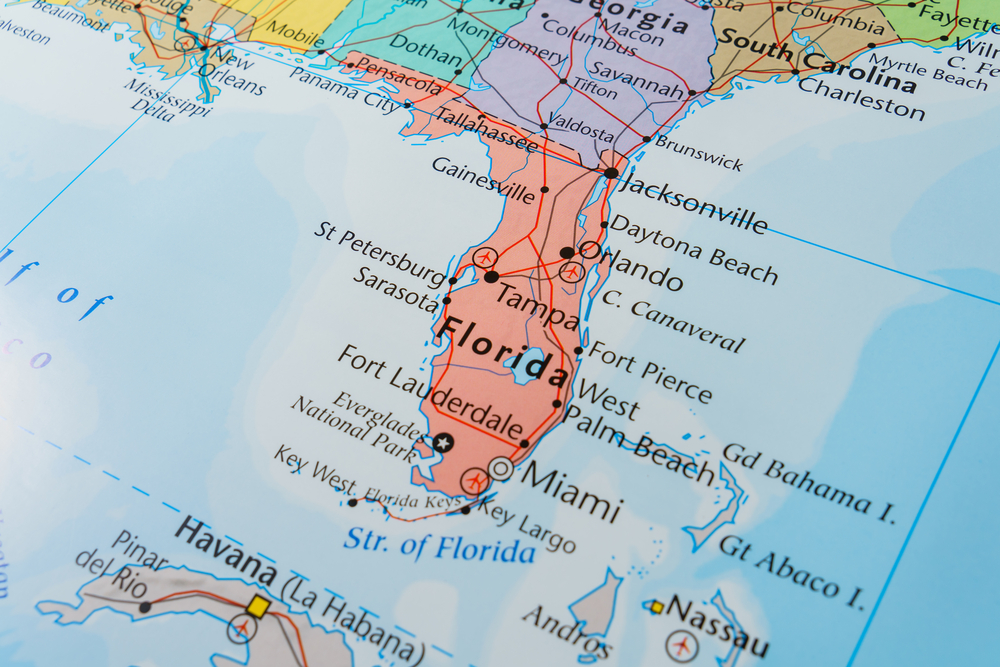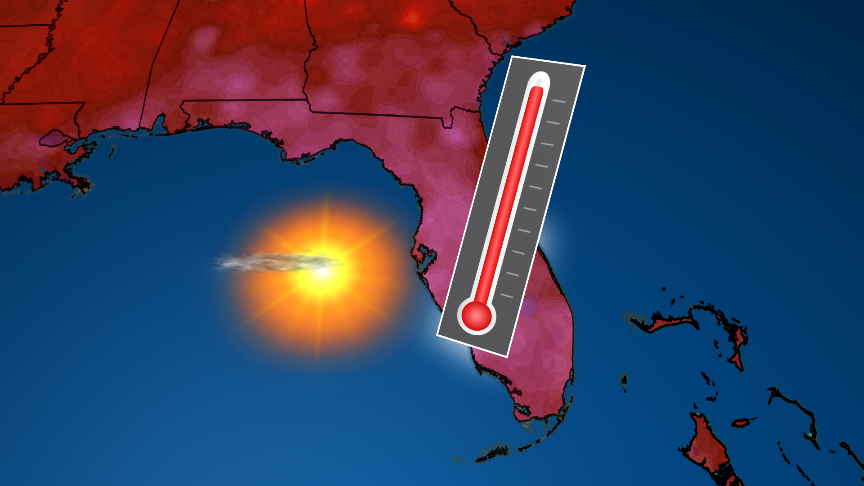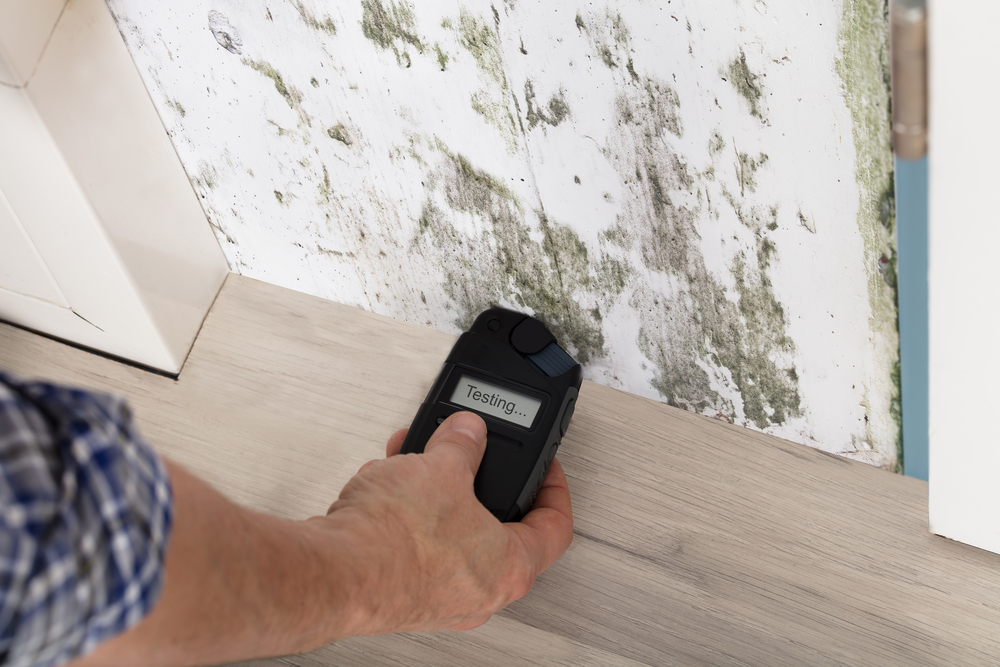
Spring in Florida is a beautiful time of year, with warm temperatures and blooming flowers. However, the increased humidity during these months also creates the perfect environment for mold growth. But why is mold growth in spring such a big issue, especially in regions like Florida?
Mold can not only cause damage to your home. It also can negatively impact your indoor air quality, potentially leading to health issues for you and your family.
In this blog post, we will discuss the impact of Florida’s spring humidity on mold growth. Additionally, we’ll offer helpful prevention tips and solutions to keep your home mold-free.
Why Mold Growth in Spring is a Concern
The Sunshine State of Florida boasts some of the most stunning beaches in the world, offering a balance of excitement and relaxation, making it an ideal place to start a family. With over 200 days of sunshine each year, from Tallahassee to Key West, it’s the perfect place to bask in the sun. But despite its idyllic qualities, this paradise has a dark side: humidity.

Being surrounded by the Atlantic and Gulf of Mexico means that the air in Florida is filled with water vapor, and the tropical heat only amplifies this issue.
Our daily activities, such as working and running errands, result in sweat buildup. The thick, wet air impedes the drying process, leading to that hot and sticky feeling we all know too well. But humidity is not just an outdoor problem; it can also affect indoor spaces.
Mold growth only requires moisture, and humidity is a source of moisture. A tiny leak under the kitchen sink, roof, or air conditioning condensation can grow mold.
With Florida’s high relative humidity levels (often over 60%) for extended periods, mold can germinate and grow into a bloom. This mold can appear in various colors, often mistaken for dirt or cobwebs. It can be in either an active or inactive state. Active mold is wet and slimy, while inactive mold is dry and dusty.
It only takes 24 to 48 hours for mold to grow once it has found a suitable environment. If left unchecked, mold can spread quickly and cause significant damage to a home’s structure and air quality.
So if you find mold or notice signs in your home, it’s best to immediately call a professional mold inspection company as soon as possible.
The Effects of Increased Humidity on Mold Growth in Spring
Florida’s spring humidity creates an ideal environment for mold growth in the following ways:
- Excess Moisture: As humidity levels rise, excess moisture can accumulate in your home, particularly in areas with poor ventilation or where water tends to collect. This provides an ideal breeding ground for mold.
- Condensation: Increased humidity can also cause condensation on windows, walls, and other surfaces, providing a constant source of moisture for mold growth.
- Warmer Temperatures: Higher temperatures during spring can accelerate mold growth, allowing it to spread more quickly and become a more significant issue in your home. May is one of Florida’s warmest months of the year. Beaches like Boca Raton and Palm Beach present one of the warmest waters in the state, reaching an average of 80 degrees Fahrenheit.

The Impact of Mold Growth on Indoor Air Quality
Mold growth in spring can significantly impact your home’s indoor air quality, leading to various potential health problems. But how?
Mold releases microscopic spores into the air, which can be inhaled by residents and cause respiratory problems and allergic reactions, irritate the eyes, nose, and throat, and exacerbate asthma symptoms.

Prolonged mold exposure can also lead to more serious respiratory issues, particularly in individuals with compromised immune systems, young children, and older adults.
It’s essential to address mold growth promptly to protect the health and well-being of those living in the home.
Prevention Tips for Reducing Mold Growth in Spring

Taking proactive steps to reduce mold growth in spring can help protect your home and your family’s health. Here are some tips to help you keep mold at bay:
- Control Humidity:
Use a dehumidifier or air conditioner to maintain indoor humidity below 60% (between 45% and 55% is ideal for Florida). This can help prevent excess moisture and mold growth.
- Ensure Proper Ventilation:
Ensure your home is well-ventilated, particularly in areas prone to mold growth, such as bathrooms, kitchens, and basements. Use exhaust fans or open windows to improve air circulation.
- Fix Water Leaks:
Check for and repair any water leaks in your home, including roofs, pipes, and faucets. Regularly inspect your home for signs of water damage or mold.
- Clean and Dry Wet Areas:
Clean and dry any wet areas within 24–48 hours to prevent mold growth. This includes spills, leaks, and condensation.
- Use Mold-Resistant Products:
When renovating or building, use mold-resistant materials such as mold-resistant drywall and paint to help prevent mold growth.
Mold Growth in Spring: Early Detection Is Key

Early detection is the key to preventing mold growth and avoiding the health and property damage it can cause. However, mold is not always easy to spot, but some signs can indicate its presence. A musty odor is a common sign of mold and visible growth on walls, ceilings, and floors.
A professional mold inspector can assess the home and identify areas where mold is growing or has the potential to grow.
If you suspect that you have mold in your home or office, it’s essential to have it inspected and removed promptly by a professional. ETA Mold offers comprehensive mold inspections that identify the source of mold and provide recommendations for remediation.
Solutions for Dealing with Mold Growth in Spring
If you suspect or discover mold growth in your home, taking action as soon as possible is essential. Here are some solutions for dealing with mold growth in spring:
- DIY Mold Removal: If the mold growth is small and limited to a non-porous surface, clean it with water and mild detergent. Make sure to wear protective gear, such as gloves, goggles, and a mask, to protect yourself from mold exposure during the cleaning process.
- Professional Mold Inspection: If you are unsure of the extent of mold growth in your home or suspect hidden mold, it is best to call a professional mold inspection company like ETA Mold. They can perform a thorough inspection, identify the source of the mold, and recommend an appropriate course of action.
- Professional Mold Remediation: For extensive mold growth or mold that has penetrated porous surfaces, it is essential to enlist the help of a professional mold remediation company. They have the necessary equipment and expertise to remove mold and restore your indoor air quality safely quality.
- Preventative Maintenance: After addressing any mold issues, it is crucial to implement preventive measures to avoid future mold growth in spring. This includes maintaining proper humidity levels, ensuring adequate ventilation, and routinely inspecting your home for potential water leaks and mold.
Protect Your Home and Health from Mold Growth in Spring
In conclusion, mold growth in spring is a serious issue that should not be taken lightly. By understanding the impact of Florida’s increased humidity on mold growth, taking steps to prevent its growth, and having it inspected and removed promptly by a professional, you can protect your health and property.
ETA Mold is here to help, so contact us today to schedule a mold inspection and start breathing easier!



Good post. I learn something new and challenging on blogs I stumbleupon on a daily basis. Its always exciting to read content from other authors and use a little something from other web sites.
I think this internet site holds some really superb information for everyone. “He is able who thinks he is able.” by Buddha.
Thank you for another great post. The place else could anyone get that kind of info in such an ideal way of writing? I have a presentation next week, and I am on the look for such info.
I like this weblog so much, saved to favorites.
I’m not that much of a online reader to be honest but your sites really nice, keep it up! I’ll go ahead and bookmark your site to come back later. Many thanks
This book offers a methodology for and a foray into foregrounding that world of things in literary sourcesthrough a focus not on the materiality of the text
Hello, Neat post. There is a problem along with your website in web explorer, might test this… IE still is the market leader and a good component of people will omit your wonderful writing due to this problem.
I genuinely enjoy examining on this website, it contains fantastic articles. “And all the winds go sighing, For sweet things dying.” by Christina Georgina Rossetti.
Oh my goodness! an amazing article dude. Thank you Even so My business is experiencing problem with ur rss . Don’t know why Unable to subscribe to it. Can there be anyone obtaining identical rss problem? Anybody who knows kindly respond. Thnkx
Very well written information. It will be valuable to anyone who employess it, including me. Keep doing what you are doing – for sure i will check out more posts.
I don’t ordinarily comment but I gotta say regards for the post on this great one : D.
After study many of the blog posts in your website now, and i really appreciate your way of blogging. I bookmarked it to my bookmark site list and will also be checking back soon. Pls look into my site likewise and figure out what you believe.
Well We certainly loved studying this. This topic acquired using a person is quite effective for accurate planning.
You must take part in a contest for one of the best blogs on the web. I’ll recommend this web site!
Thank you, I have recently been looking for information approximately this topic for a long time and yours is the greatest I’ve found out till now. However, what about the conclusion? Are you positive about the source?
I have a hard time describing my thoughts on content, but I really felt I should here. Your article is really great. I like the way you wrote this information.
I keep listening to the news update lecture about receiving free online grant applications so I have been looking around for the best site to get one. Could you advise me please, where could i get some?
I would like to thnkx for the efforts you have put in writing this website. I am hoping the same high-grade blog post from you in the upcoming also. Actually your creative writing skills has encouraged me to get my own site now. Really the blogging is spreading its wings fast. Your write up is a good example of it.
Hi, I just found your website via yahoo. Your post is truly pertinent to my life at this moment, and I’m really delighted I discovered your website.
Simply wanna remark that you have a very decent site, I enjoy the design and style it really stands out.
Thanks for this wicked post. I am wondering if you were thining of publishing similar posts to this. .Keep up the excellent posts!
Good aftie,i am a blogger too” and i can see that you are a nice blogger too,
Hello, i feel that i saw you visited my website thus i got here to “return the want”.I’m attempting to find issues to enhance my website!I assume its adequate to make use of some of your concepts!!
Attractive component to content. I simply stumbled upon your weblog and in accession capital to assert that I get in fact enjoyed account your blog posts. Any way I’ll be subscribing for your augment or even I achievement you access persistently rapidly.
The post is absolutely fantastic! Lots of great information and inspiration, both of which we all need! Also like to admire the time and effort you put into your site and detailed info you offer! I will bookmark your blog!
That is the best weblog for anyone who desires to find out about this topic. You understand a lot its virtually laborious to argue with you (not that I actually would need…HaHa). You definitely put a brand new spin on a topic thats been written about for years. Great stuff, simply great!
Just processing some free time on Stumbleupon and I found your entry. Not typically what I like to read about, but it was unquestionably valuable my time. Thanks.
It is truly a nice and helpful piece of info. I’m satisfied that you shared this helpful information with us. Please stay us up to date like this. Thanks for sharing.
I’m still learning from you, but I’m improving myself. I definitely love reading all that is posted on your website.Keep the stories coming. I enjoyed it!
Hey! I know this is kinda off topic nevertheless I’d figured I’d ask. Would you be interested in exchanging links or maybe guest authoring a blog post or vice-versa? My website goes over a lot of the same subjects as yours and I believe we could greatly benefit from each other. If you might be interested feel free to send me an e-mail. I look forward to hearing from you! Awesome blog by the way!
Hey there! Someone in my Myspace group shared this site with us so I came to give it a look. I’m definitely enjoying the information. I’m bookmarking and will be tweeting this to my followers! Exceptional blog and outstanding style and design.
There is visibly a lot to know about this. I feel you made some nice points in features also.
It is really a nice and helpful piece of info. I am glad that you shared this helpful information with us. Please keep us informed like this. Thanks for sharing.
While improving eyesight isn’t often the goal of consumers who wear their glasses religiously, it doesn’t mean they’re stuck where they are.
SightCare supports overall eye health, enhances vision, and protects against oxidative stress. Take control of your eye health and enjoy the benefits of clear and vibrant eyesight with Sight Care. https://sightcarebuynow.us/